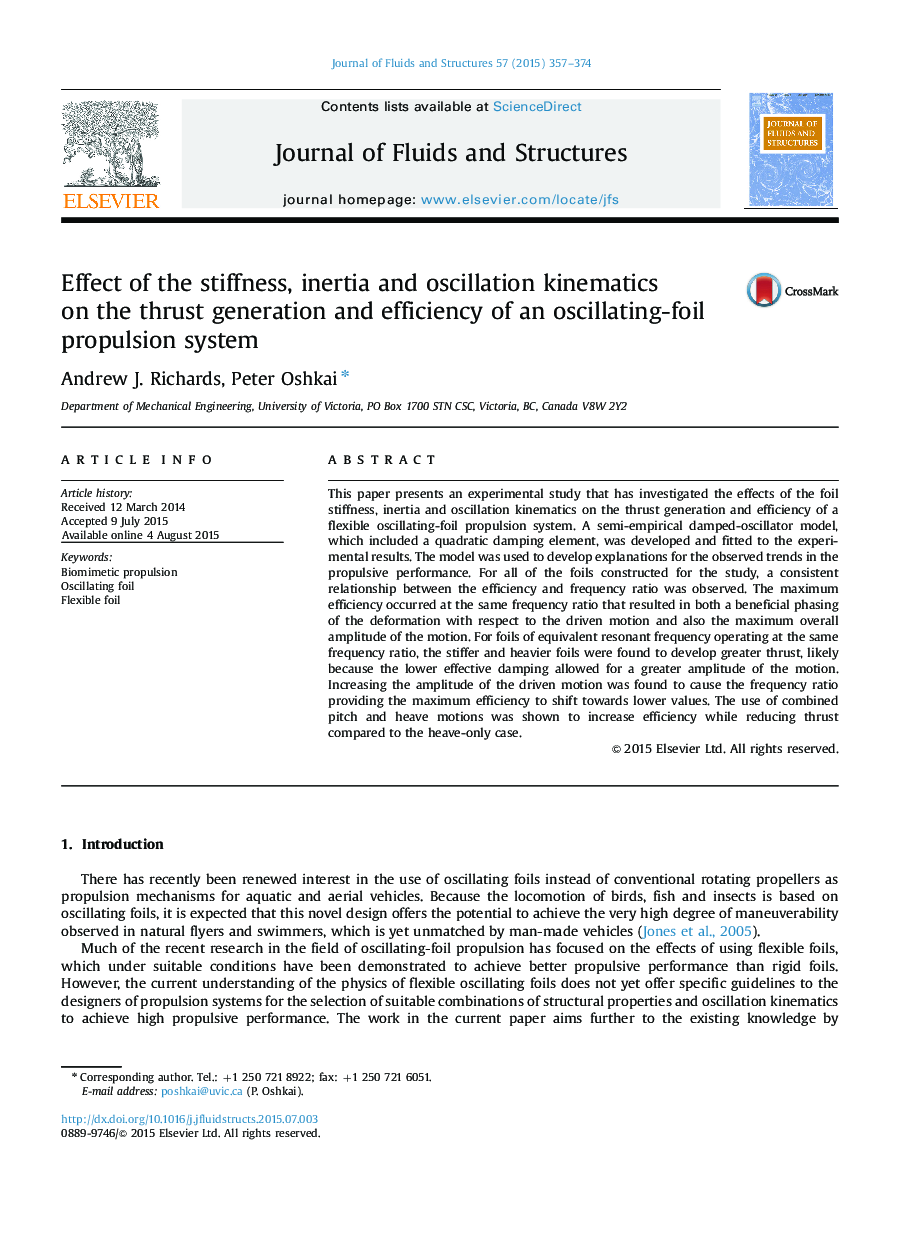| Article ID | Journal | Published Year | Pages | File Type |
|---|---|---|---|---|
| 792620 | Journal of Fluids and Structures | 2015 | 18 Pages |
•Effects of foil stiffness and inertia are studied experimentally.•A semi-empirical oscillator model with a quadratic damping element is developed.•Heavier and stiffer foils produce more thrust due to lower effective damping ratio.
This paper presents an experimental study that has investigated the effects of the foil stiffness, inertia and oscillation kinematics on the thrust generation and efficiency of a flexible oscillating-foil propulsion system. A semi-empirical damped-oscillator model, which included a quadratic damping element, was developed and fitted to the experimental results. The model was used to develop explanations for the observed trends in the propulsive performance. For all of the foils constructed for the study, a consistent relationship between the efficiency and frequency ratio was observed. The maximum efficiency occurred at the same frequency ratio that resulted in both a beneficial phasing of the deformation with respect to the driven motion and also the maximum overall amplitude of the motion. For foils of equivalent resonant frequency operating at the same frequency ratio, the stiffer and heavier foils were found to develop greater thrust, likely because the lower effective damping allowed for a greater amplitude of the motion. Increasing the amplitude of the driven motion was found to cause the frequency ratio providing the maximum efficiency to shift towards lower values. The use of combined pitch and heave motions was shown to increase efficiency while reducing thrust compared to the heave-only case.
